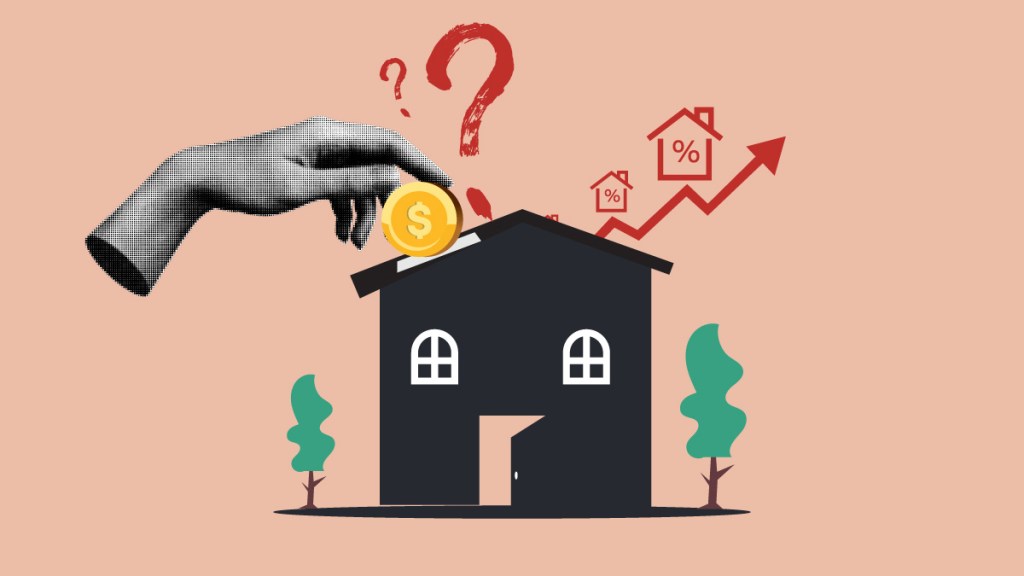The American dream is synonymous with two ideas. One is the idea that anyone in this country can find a path to economic success regardless of their circumstances at birth. The second idea is the symbolic encapsulation of the first idea: homeownership. Owning a home is the signifier of economic success, but over the last few years, that milestone has gotten farther out of reach for first-time homebuyers.
As affordability has worsened, homebuyers have gotten older and fewer homebuyers are first-time homebuyers. Because the children of homeowners are more likely to be homeowners themselves, this pattern has profound implications on the economic mobility for younger homebuyers like millennials and Gen-Zers and also for future generations. The wealth gap between homeowner and renter households is widening. If that is left unchecked, it could lead to a society where economic success is increasingly determined by birth circumstances rather than hard work and merit, thereby undermining the very essence of the American Dream.
Homebuyers have become older and wealthier
Young people are having a particularly hard time in the housing market. According to a recent NAR survey, homebuyers are older than they used to be. The median buyer is now 56 years old, up from 49 in 2023. The typical first-time homebuyer is 38, up three years from 2023—a stark increase from the 1980s when the typical first-time homebuyer was in their late 20s.
This aging trend is matched by a rise in wealth among homebuyers. One in three home purchases today is made with cash, compared to just one in four during the late 2010s. Existing homeowners, leveraging their home equity, can make substantial down payments, giving them a significant edge over first-time buyers who must borrow more at today’s higher interest rates.
First-time homebuyers face higher barriers than ever before
Affordability is near-record lows as mortgage payments for the median-priced home have reached historic highs. As home prices climb further and further out of reach, first-generation homebuyers trying to break into the market must rely on increases in their earnings to increase their buying potential. However, high-paying jobs tend to be in cities with the highest priced housing—places like Boston, New York, San Francisco, San Jose, and Los Angeles where fewer than 10% of listed homes are affordable to households earning the median income. This puts first-generation homebuyers in an impossible position where aspiring homebuyers have to stay renters even longer in order to become financially able to buy a home.
Even though homebuyers are getting older and increasingly paying cash, those taking on new mortgage debt are younger buyers from racially diverse backgrounds. These young borrowers will, over time, reap the benefits of homeownership, but they are paying more for that privilege and having to sacrifice more, like working longer hours or delaying expensive medical care.
Nearly 40% of homeowners surveyed by Redfin admit they couldn’t afford their current home if they waited to buy until today. It’s no surprise that the share of first-time homebuyers has plummeted to a historic low of 24%, down from 32% last year and far below the pre-2008 norm of 40%.
The children of homeowners are more likely to be homeowners themselves
The divide between homeowners and renters isn’t just a reflection of the present; it’s part of a generational cycle. Adult children of renters who want their children to have a better chance at achieving the American dream must figure out how to break into the housing market without family help. According to research from economists at the University of Chicago, children of homeowner parents are significantly more likely to become homeowners themselves. And according to a Redfin-commissioned survey, over a third of homebuyers under the age of 30 planned to use a cash gift from a family member to cover their down payment.
To reverse these trends, we must either increase homeownership or detach it from the American Dream
The hurdles facing first-time homebuyers are higher now than at any point in recent memory. These barriers are especially formidable for those without familial wealth or a legacy of homeownership. To reverse these trends, we must address the root causes of unaffordability. That means building starter homes, reforming zoning laws, and creating pathways for economic mobility that don’t rely so heavily on homeownership. As real estate professionals, we can empower first-time and younger homebuyers by providing education, advocating for affordable housing policies, leveraging existing first-time homebuyer programs, and promoting equitable access to neighborhoods.
We must ensure that renters have the option to live in their apartment buildings right next door to single-family homeowners. That way, renter households will have the same access to schools, jobs, and ultimately financial stability. The American Dream should be about opportunity—not just the ability to own a home, but the ability to build a secure and prosperous life, however one defines it.
Register today to attend the Housing Economic Summit in Dallas, on Feb. 26, 2025 and hear Daryl Fairweather in person. The summit is designed to give you a comprehensive understanding of the economic factors driving the housing market in 2025 — and what it all means for your business.







As a home builder and real estate broker for many years, I have a well-grounded opinion about the first-time homebuyer issue.
I read Ms. Fairweather’s article with the hope of gaining some insight or enlighten perspective on the subject. However, she provides no source or corroboration in support of her conclusion when she says “We must ensure that renters have the option to live in their apartment buildings right next door to single-family homeowners. That way, renter households will have the same access to schools, jobs, and ultimately financial stability.”
Her good intentions remind me of the old saying “The road to disaster is paved with good intentions”, I expected something more realistic and less wistful from someone with an PhD in economics from MIT. A recommended solution would have been better.